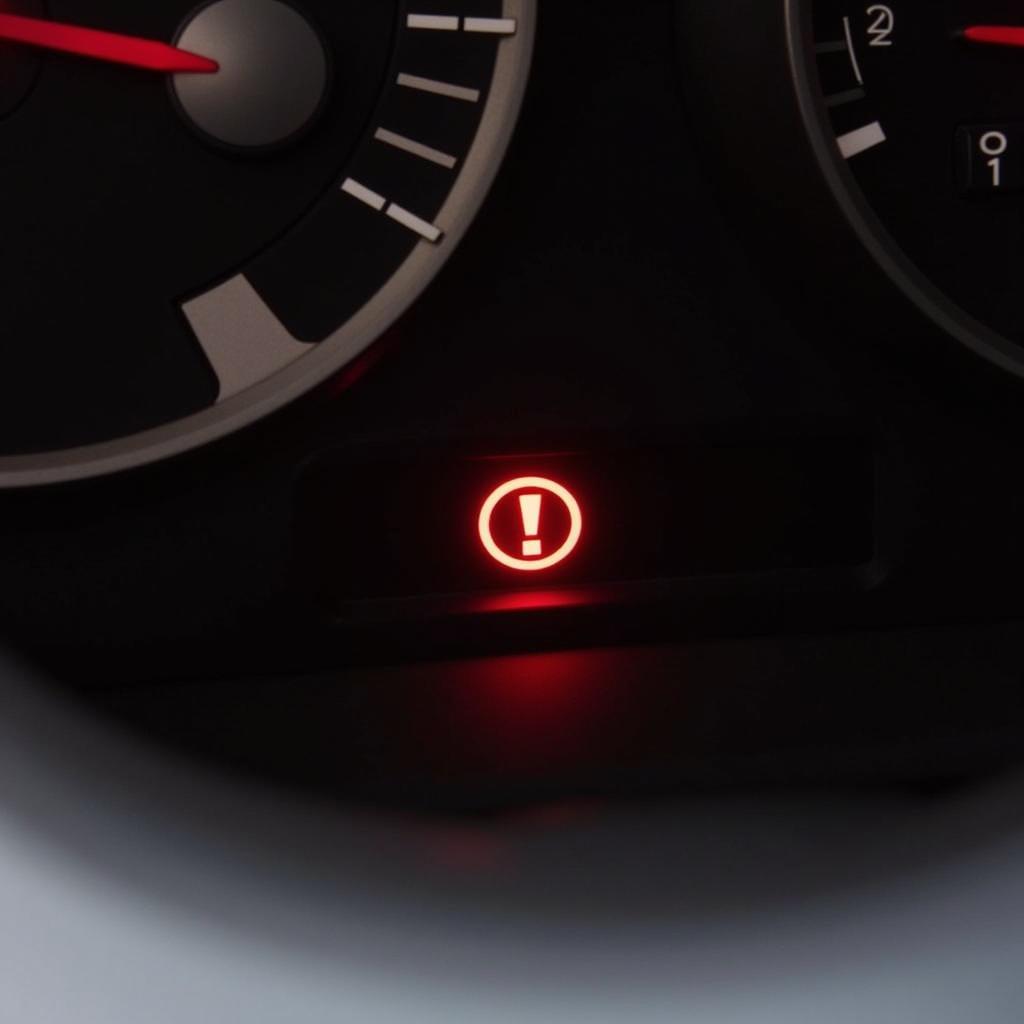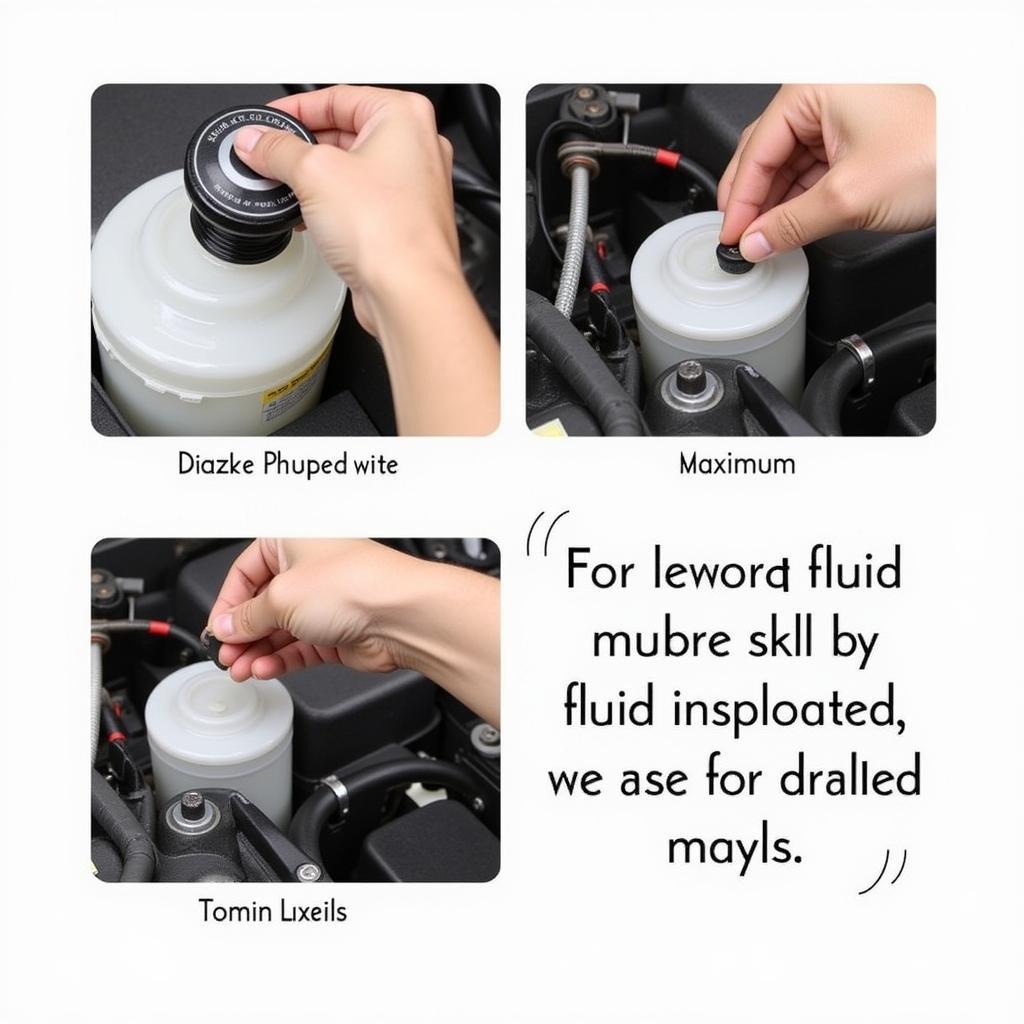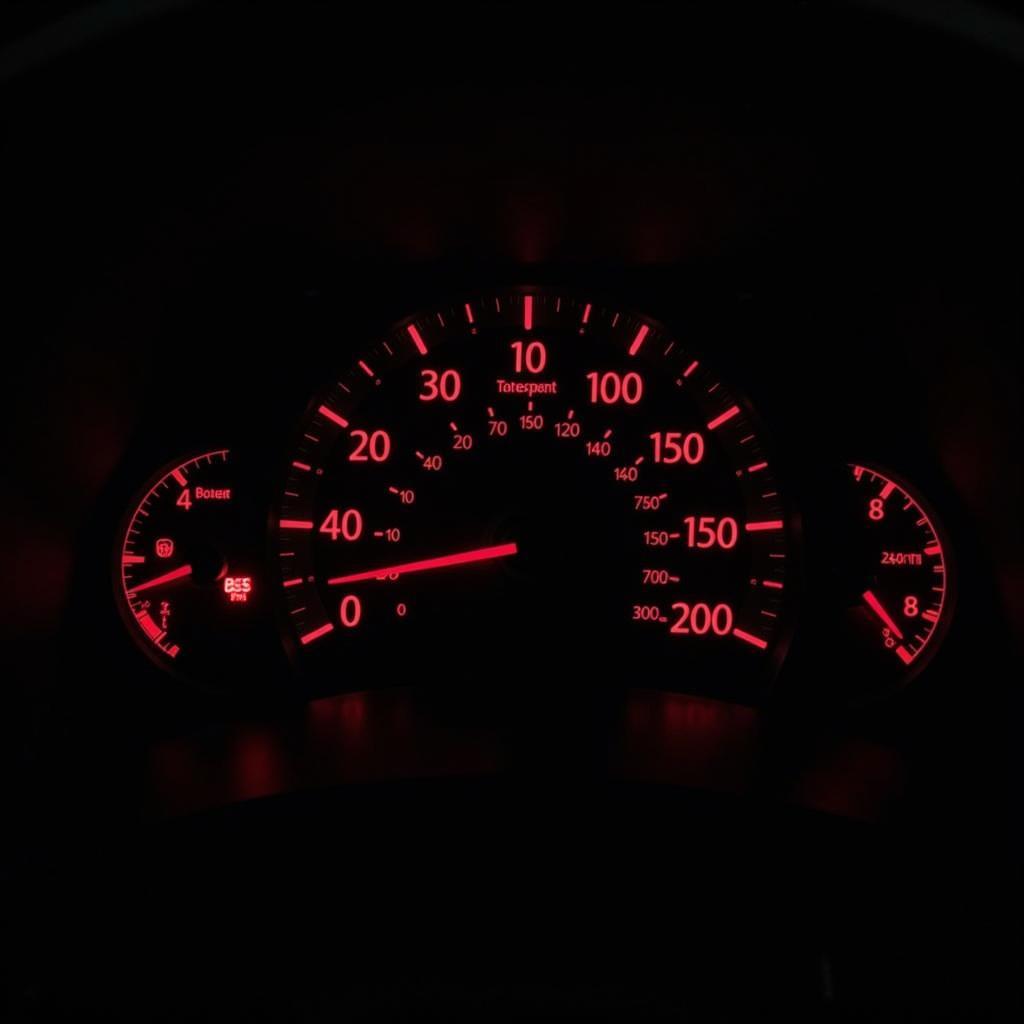The brake fluid low warning light is a crucial indicator of a potential problem within your vehicle’s braking system. Ignoring this warning can lead to serious safety risks and potentially costly repairs. This comprehensive guide will delve into the reasons behind a low brake fluid warning light, how to diagnose the problem, and the steps you can take to resolve it, even remotely.
If your brake fluid light comes on, it’s crucial to understand what it means and take appropriate action. Low brake fluid level warning light provides a general overview of the warning light and its implications.
What Does the Brake Fluid Low Warning Light Mean?
The brake fluid low warning light, often a red exclamation mark within a circle, signals that the brake fluid level in the master cylinder has dropped below a safe operating threshold. This can be caused by a variety of factors, from normal wear and tear to more serious issues like leaks. Understanding these causes is the first step in resolving the problem.
Common Causes of a Low Brake Fluid Warning Light
Several factors can trigger the brake fluid low warning light. These include:
- Brake Pad Wear: As brake pads wear down, the brake calipers need to extend further to apply the brakes. This requires more brake fluid, leading to a lower level in the reservoir.
- Brake Fluid Leaks: Leaks can occur in various components of the braking system, such as brake lines, hoses, calipers, and the master cylinder. Leaks are a serious safety concern and require immediate attention.
- Internal Leaks within the Master Cylinder: While less common, internal leaks within the master cylinder can also cause brake fluid loss.
- Issues with the Brake Fluid Level Sensor: A faulty sensor might incorrectly trigger the warning light even when the fluid level is adequate.
 Brake Fluid Low Warning Light on Car Dashboard
Brake Fluid Low Warning Light on Car Dashboard
Diagnosing a Low Brake Fluid Warning Light
Diagnosing the cause requires a systematic approach. Start by visually inspecting the brake fluid reservoir. Note the fluid level and check for any visible leaks around the master cylinder, brake lines, and calipers. If you notice a leak, it’s crucial to address it promptly. A professional mechanic can pinpoint the source of the leak and recommend the necessary repairs. For specific car models, you might find helpful resources like the bmw 1 series low brake fluid warning light guide.
Addressing a Low Brake Fluid Warning Light
Depending on the cause, addressing a low brake fluid warning light can involve several steps:
- Topping off Brake Fluid: If the fluid level is simply low due to brake pad wear, you can carefully top it off with the correct type of brake fluid recommended by your vehicle’s manufacturer.
- Repairing Leaks: Leaks require professional attention. A mechanic will identify and repair the leaking component, whether it’s a brake line, hose, caliper, or the master cylinder.
- Replacing Brake Pads: Worn brake pads should be replaced to maintain optimal braking performance and prevent further fluid level drops.
- Addressing Sensor Issues: If the sensor is faulty, it will need to be replaced.
 Checking the Brake Fluid Level
Checking the Brake Fluid Level
Remote Diagnostics and Software Solutions
Advancements in automotive technology now allow for remote diagnostics and software solutions that can identify and sometimes even address certain brake system issues. These solutions can remotely access vehicle data, diagnose potential problems, and even perform software updates or calibrations related to the braking system. While not all issues can be fixed remotely, these technologies can provide valuable insights and potentially save time and money. For example, resources like the 2016 ford focus low brake fluid warning light can be helpful.
“Remote diagnostics are transforming the automotive service industry,” says John Smith, Lead Automotive Engineer at CarDiagTech. “We can now access vehicle data remotely, diagnose issues faster, and even perform software updates without the car needing to be physically present in a workshop.”
Why is my brake fluid low warning light on?
A low brake fluid warning light indicates that the fluid level in your brake system is below the safe operating level.
What should I do if my brake fluid low light comes on?
If the warning light comes on, stop driving immediately and check your brake fluid level. If it’s low, add brake fluid if you have some. If not, or if you notice a leak, have your car towed to a mechanic. Articles like the one about the yellow brake fluid warning light on 1983 mercedes 300d offer model-specific advice.
Can I drive with the brake fluid low warning light on?
No, driving with the brake fluid low warning light on is extremely dangerous and can lead to brake failure.
“Ignoring a low brake fluid warning light can have serious consequences,” warns Jane Doe, Senior Automotive Technician at AutoRepair Solutions. “It’s crucial to address the issue immediately to ensure your safety and prevent further damage to the braking system.” This is particularly relevant if you are experiencing issues like the low brake fluid warning tight 2003 chevy impala.
Conclusion
The brake fluid low warning light is a critical safety indicator that should never be ignored. Understanding its causes, taking appropriate diagnostic steps, and utilizing available resources, including remote diagnostic options, are crucial for maintaining a safe and reliable braking system. Addressing the issue promptly can prevent serious accidents and costly repairs, ensuring your vehicle’s safety and longevity. Remember that your brake fluid low warning light serves as a critical alert. Don’t ignore it.



